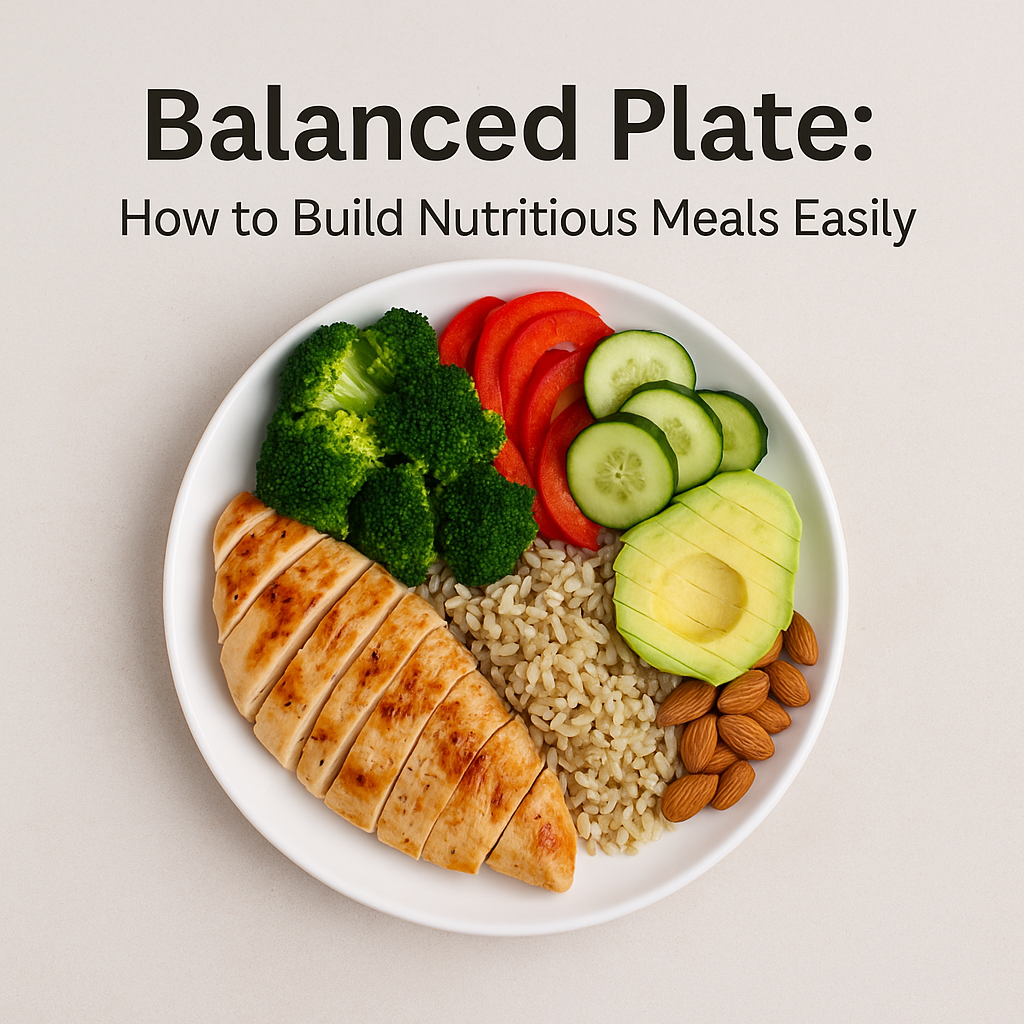Eating healthy doesn’t have to be complicated. One of the simplest ways to maintain good nutrition is by following the balanced plate method. This approach ensures that every meal gives your body the right mix of nutrients, keeps your energy levels stable, and supports long-term health.
So, what exactly is a balanced plate? Let’s break it down step by step.
🍅 1. Fill Half Your Plate with Vegetables and Fruits
Vegetables and fruits are packed with vitamins, minerals, antioxidants, and fiber. They support digestion, boost immunity, and help prevent chronic diseases.
- Choose a colorful variety: leafy greens, carrots, cucumbers, berries, apples.
- Aim for seasonal and local produce for maximum freshness.
- Lightly steam, sauté, or enjoy them raw to retain nutrients.
🍗 2. One Quarter Lean Protein
Protein is essential for muscle repair, hormone balance, and energy. Including lean sources of protein in your meals helps you feel full for longer and supports healthy weight management.
- Options include lentils, chickpeas, beans, eggs, fish, chicken, paneer, tofu.
- For vegetarians, combining legumes with grains ensures a complete protein source.
- Avoid deep frying—opt for grilling, baking, or steaming.
🌾 3. One Quarter Whole Grains
Whole grains provide complex carbohydrates, fiber, and essential nutrients. Unlike refined grains, they release energy slowly, keeping you active throughout the day.
- Healthy choices: brown rice, quinoa, oats, whole-wheat roti, millet, barley.
- Reduce white rice and refined flour (maida), as they lack fiber and spike blood sugar.
🥑 4. Add Healthy Fats
Good fats are crucial for brain function, joint health, and vitamin absorption. The key is moderation and choosing the right sources.
- Add nuts, seeds (chia, flax, pumpkin), avocado, and olive oil.
- Limit unhealthy trans fats found in fried foods, packaged snacks, and margarine.
🍽 5. Example of a Balanced Indian Meal
- Breakfast: Oats with milk, nuts, and fresh fruits.
- Lunch: Whole-wheat roti, dal, sabzi, salad, and a small portion of curd.
- Dinner: Brown rice with grilled fish/chickpeas, sautéed vegetables, and soup.
🕒 6. Don’t Forget Timing & Hydration
Even a perfectly balanced plate won’t work if your eating schedule is irregular. Stick to regular meal times and drink enough water throughout the day.
✅ Final Thoughts
The balanced plate method is not a diet trend—it’s a sustainable lifestyle habit. By dividing your plate into half veggies/fruits, a quarter protein, and a quarter whole grains, you can easily achieve better health without overthinking your meals.
Start small: make one meal balanced every day, then gradually make it a routine. Soon, eating healthy will feel effortless.

